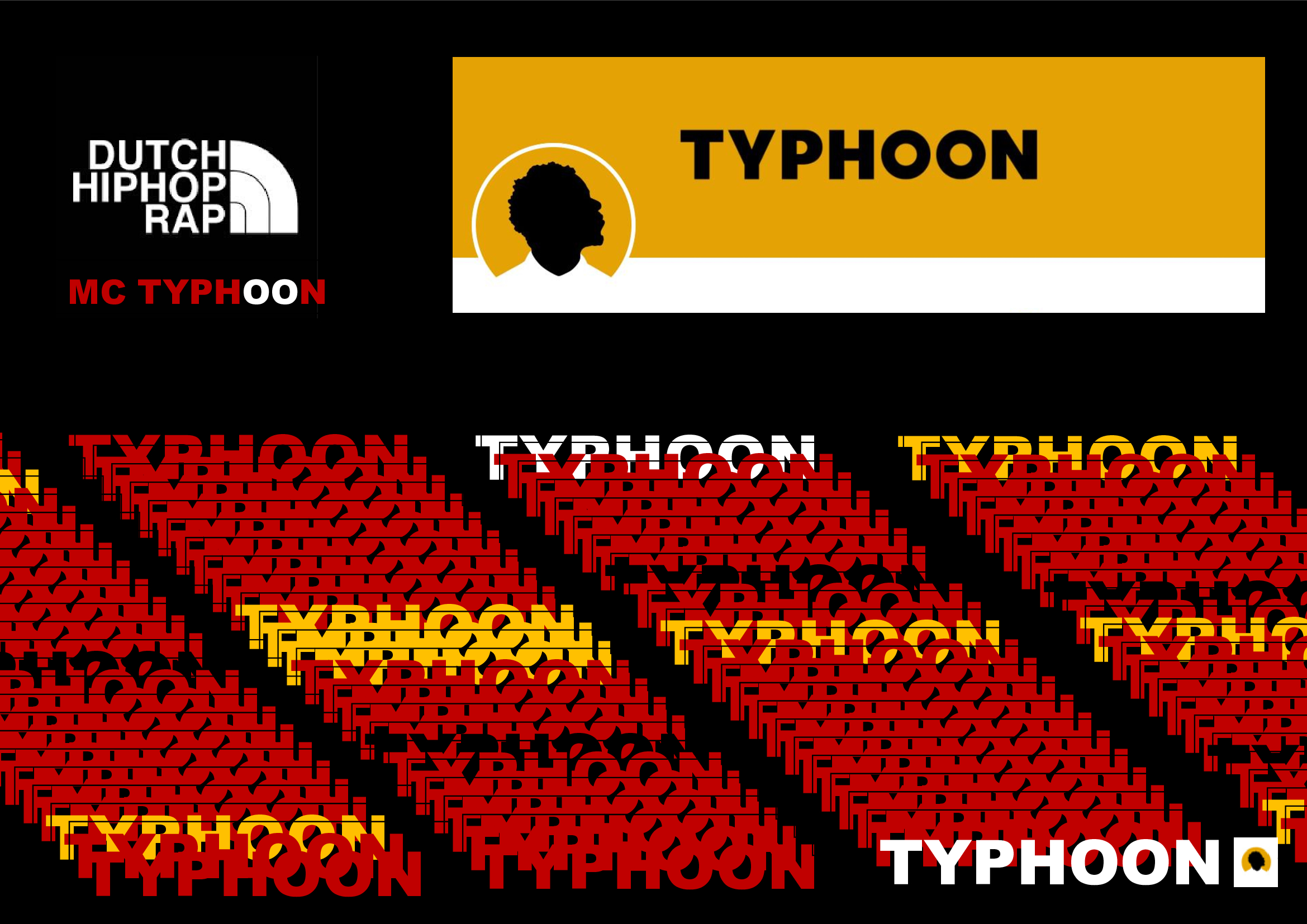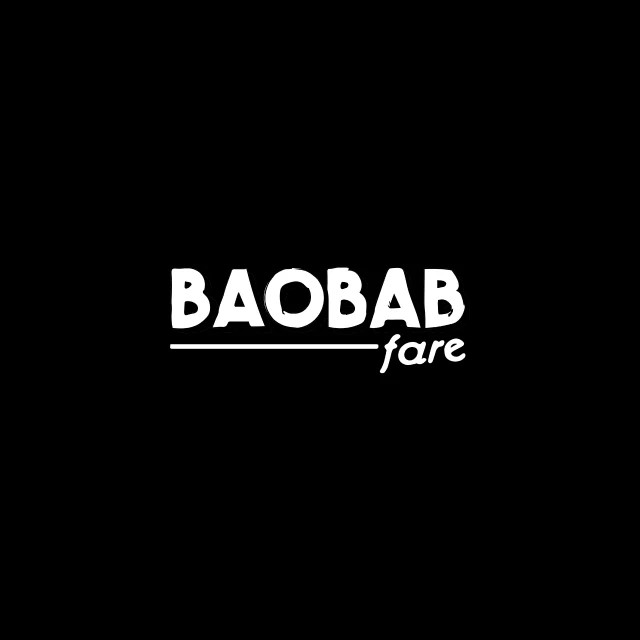-
AuteurBerichten
-
-
Slaaf, of
tot slaaf gemaakt.
Kooplieden, of
Schurk.
Heiligen, of
Zondaars.
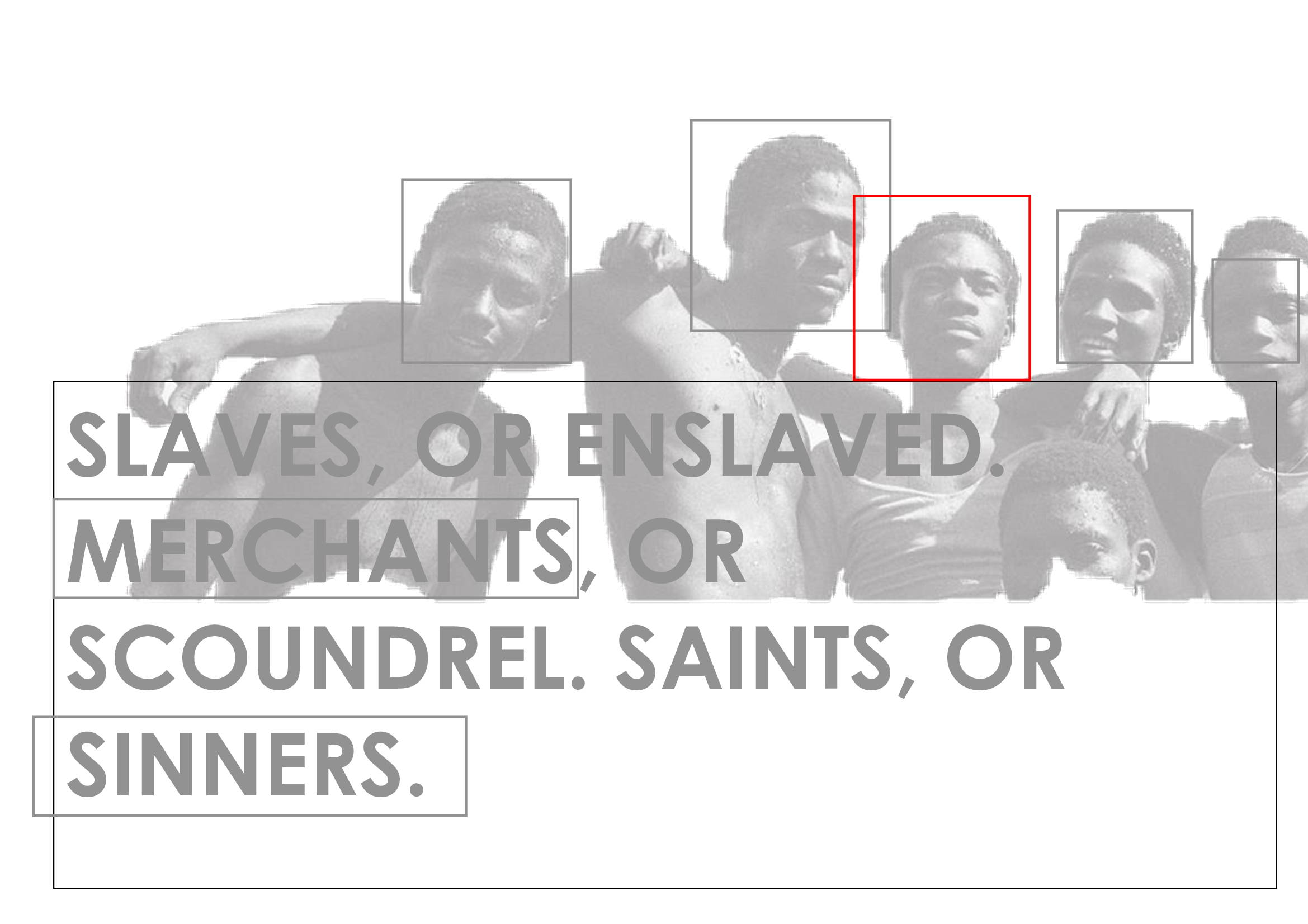
Introduction & Timeline:
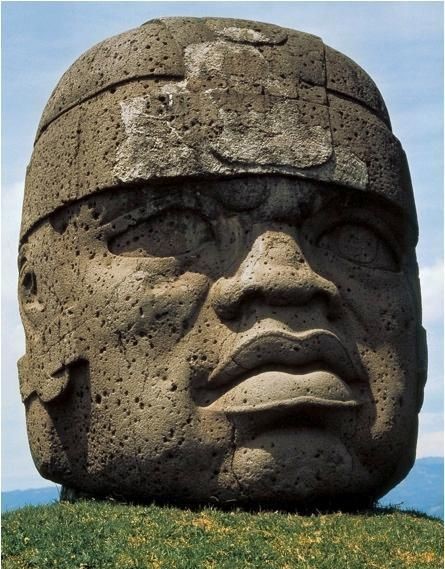
Contrary to Eurocentrism’s pseudohistorical underpinnings, Oud Afrika was niet geïsoleerd van de oude wereld.
For centuries, Eurocentric narratives have dominated global historiography, frequently marginalizing Africa’s role in world history. Perpetuated by colonial-era historians, these perspectives often depicted Africa as a dark, passive and isolated continent.
Historical and archaeological research across academia, reveals however an intricate picture of the ancient trans-saharan African trade, dating from approximately 5000 B.C (lang voor de 1e eeuw CE; and described as beginning with the age of African metallurgy in the case of the blacksmith-kings of Tarkur ‘old Senegal’), verspreid over het oude Koninkrijk van Kus in Kerma, Soedan; door het Darb el-Arbain trade route, and facilitating the exchange of diverse commerce in incense, wheat, spices, gold, salt, animals/poultry, skilled artisan’s and ivory; and importantly, the import of minerals such as ‘obsidiaan' van Tarkur [old Senegal] to create blades, objects, and metalworking – underscoring the high value placed on African trade-craft within these trade corridors. The region was an ethnic melting pot, with commerce spanning extensive geographical footprints; with records showing lasting contributions of Africa to other regions and cultures, across Mesopotamia, the Levant, en de Aegean world, and anthropological research recently discovering colossal Olmec sculptures with African facial lips and nose features, and Manding inscripties in de dichte bossen van South America, suggesting early trans-continental connections, and cultural exchanges.
De zijderoutes:
Handel vervoerde informatie en de in elkaar grijpende handelsnetwerken waren verbonden Afrika to most of the old world, brought about an exchange of trade in oriental [eastern] silks for amber, jade, kleurstoffen, specerijen, goud, olie, gesmeed gereedschap, inclusief mythische wezens zoals de giraffe [of de qilin, vereerd in Chinese, Japans En Koreaans mythologie] enz, ca 114 v.Chr, van het uitbreiden Han-dynastie.
De kunst van het maken van zijde bleef exclusief Chinese export during this period, and the Han imperial documents show diplomatic and trade relations between the Han-dynastie and Africa, with a diplomatic envoy ‘Zhang Qian' uitgezonden om de transcontinentale handel veilig te stellen en politieke protectoraten te creëren voor de snelgroeiende zijdehandel. Deze praktijk ging door tot in het begin Ming-dynastie, met verslagen van 'Zheng He' (een diplomaat en admiraal) die tussendoor het binnenland van Afrika bezoekt 1419 na Christus En 1433 na Christus, en Afrikaanse gezanten/ambassadeurs uitgenodigd door Keizer Zhu Di om de zeer uitgebreide te vieren Chinees Nieuwjaar bij het nieuw gebouwde Verboden Stad; circa 1421 na Christus.
De Grieks-Romeinse periplus “De Periplus van de Roode Zee” leverde ook een overzicht op van de vaarroutes en commerciële kansen tussen Afrika en externe/strategische handelshavens.
De Romeinse rijk erfde de gevestigde handelsnetwerken die deel uitmaakten van de Zijderoute tussen de oostelijke handelsroutes en Afrika, na de verovering van Egypte in 30 voor Christus.
Lucius Septimius Severus’s Ancestry – (“Aethiops quidam e Numero Militari”):
Het zich uitbreidende Romeinse rijk nam de handel, aristocratie en militaire tradities van de heersende elites van veroverde soevereine staten in zich op en bracht senatoriale / diplomatieke betrekkingen tot stand. De immense multi-etnische diversiteit die bestond binnen de snelgroeiende bevolking van het Noord-Afrikaanse Romeinse rijk wordt vermeld in de Notitie Dignitatum ("De lijst van administratieve Romeinse kantoren"), en zoals weerspiegeld in de bekwame Afrikaanse (Ethiopië/Mauri/Moors) militair regiment dat deel uitmaakte van de campagnes van het Romeinse leger Germania en Britannia, en in Lucius Septimius Severus’s voorgeslacht.
In 193 n.Chr, Lucius Septimius Severus werd gekroond tot heerser van alle Romeinse rijk en werd de eerste van Rome Afrikaanse Emperor; a product of the cultural and political union/alliance between an African father, and a mother of Roman descent, coming from a prominent Roman family of equestrian rank.
De meest opmerkelijke latere expeditie van keizer Septimius Severus soevereiniteit was in de Romeinse provincie van Brittannië; en waar hij stierf York, ca 211 n.Chr.
During this period African’s were known by many names, and led the conquest of the Iberian Peninsula circa 711 n.Chr tot 1492 n.Chr, na de val van de Romeins bisdom Africae (Roman Diocese of Africa), and the Roman Empire.
De zijdehandel in Afrika ging lange tijd door en wat nu bekend staat als 'de zijderoutes of zijderoute' bestond meer dan 1500 jaar, tot ongeveer 1453 na Christus.
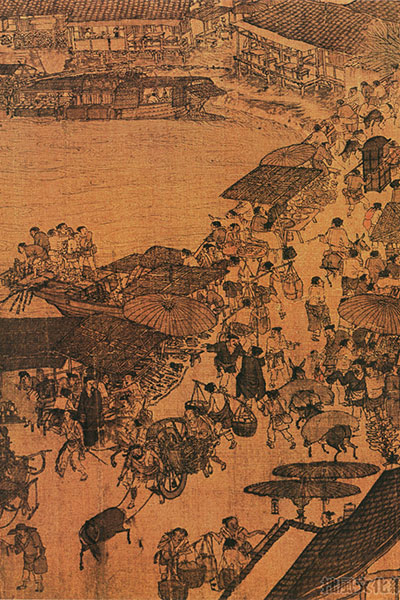
De Groot-Zimbabwe, Malinees En Ghanese rijk lay on the trade routes, between the east coast and the interior of Africa, giving rise to a host of middlemen and trading posts, with the requirement for taxes and protection along the way.
Religie, nieuwe technologieën, innovatie en ideeën verspreidden zich net zo vloeiend langs de Afrikaanse handelscorridors als goederen, wat resulteerde in de groei van multiculturele steden langs het binnenland van de trans-Sahara handelsroutes, namelijk Gao En Timboektoe, enz
Op het hoogtepunt van de Afrikaanse renaissance, the well organised system of government under the leadership of King’s and Queens’s, such as Shanakdakhete (1st century BCE onwards Kingdom of Kush (Nubia, modern-day Sudan); Kaleb of Axum (6th century CE onwards); Tunka Manin (11th century CE onwards, Region of Ghana Empire (Modern-day Mali, Mauritania, Senegal); Sundiata Keita (1217–1255 CE) Region of Mali Empire (Modern-day Mali and surrounding regions); Musa Keita I of Mansa Moesa (C.1312–1337 CE), the extensive travel and trading networks of African merchants and African scholars developed an important book trade, establishing The Kingdom of Kush, as well Timbuktu (Modern-day Mali) as scholarly centres in Africa [known for producing the Meroitic script, one of Africa’s earliest writing systems,] circa 4e CE en verder.
As a result, tales of Africa’s wealth, exotic exports, renaissance, lifestyle and high-culture fuelled speculation in Europa, as not just being extremely rich, but also being particularly mysterious. These stories helped prompt the European interest and exploration of opportunities in Africa.
The decline of these African city-states resulted from a shift in the dynamics of international trade, internal rivalries [notably, the Saadiaans/Marokkaans invasie van de Niger interieur, de slag om Tondibi, en de Slag om Alcacer Quibir] nieuwe varende handelsroutes, geavanceerde maritieme/navigatievaardigheden en wapens, toegenomen vraag naar en concurrentie om land, toegang tot goederen en hulpbronnen zoals goud, een verschuiving in geografische dominantie en ideologie.
De politieke fragmentatie van de regio, de plundering van multiculturele steden, literatuur en schatten van gecentraliseerde rijken als Mali, Songhai, Kongo/Congo, en de toenemende aanwezigheid van de Ottomaans‘s, and Portugal, marked the end of the region as a dynamic force in commerce.
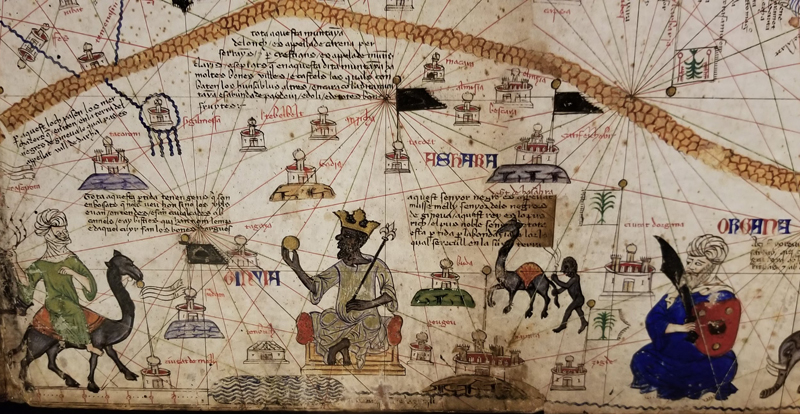
The beginnings of European
Activity in Africa:
Net als andere buitenlandse reizigers en leveranciers van goederen, stonden Afrikaanse kooplieden en handelaren zeker open voor de Europese nieuwkomers.
De komst van de eerste Europese handelaren, ruim 5440 jaar na de uitwisseling van (bekend en gedocumenteerd) handel begon in Afrika, kan in verband worden gebracht met een jonge Portugese kapitein'Antam Gonçalvez' die, na verhalen te hebben gehoord over het potentieel voor handel en winst, in 2008 aan de reis naar Westelijk Sub-Sahara Afrika begon 1441 na Christus, in opdracht van 'Dom Henrique van Portugal, Hertog van Viseu’ to obtain seal skins, spices and oil, for onward sale in Lissabon.
Portugal was desirous to retain a monopoly on trade in Africa, and sought justification of its position, ‘early discoveries’ and sphere of influence (de nieuw gevonden handelsroutes), via een Pauselijke bul van 1442 n.Chr, besteld door Paus Eugenius IV, the consequence of which would be the legitimisation of the capture and enslavement of non-Christian Africans [in the newly explored land], under the premise and designation of the enterprise as a crusade; a Pauselijke bul door Paus Nicolaas V, in 1452 CE en 1455 CE, en een pauselijke bul die de Verdrag van Tordesillas (in 1494 na Christus).
In die tijd, in de 15e en 17e eeuw, waren zilver en goud de internationale handelsstandaarden in Europa en Azië. De aanvoer van edele metalen was belangrijk om economieën te stimuleren en valuta's te ondersteunen voor uitwisseling en import.
Dezelfde logica en materiële krachten waren operationeel bij de exploitatie van Maya-goud door Spanje, en toen dit was uitgeput, de heldendaden van de zilvermijnen van Mexico. Inderdaad, veel van de rivaliteit tussen Europese landen in de 15e en 18e eeuw is ontstaan uit de wens om hun economieën en valuta's te beschermen en te versterken.
Het nieuws van Portugese heldendaden in Afrika werd gehoord in het naburige Spanje, en over de rest van Europa, waarbij de meeste zich buiten de buit voelen.
Tussen 1495 na Christus En 1559 na Christus, werden honderden Portugese schepen overvallen, buitgemaakt en geplunderd door de Engelsen, evenals de Engelse heimelijke betrokkenheid bij de Slag bij Agadir ('Santa Cruz') 1541 na Christus.
Koning Jan III van Portugal schreef naar Koningin Mary van Engeland (1555. n.Chr) als gevolg daarvan herstelbetalingen eisen voor de in beslag genomen en geplunderde schepen. Met name in zowel Portugal, Spanje als in heel Europa was het de vorst die titels instelde voor handelsmonopolies over de nieuwe 'opkomende commerciële grens', waarbij hij een heffing of belasting afleidde voor handelsmonopolies.
Notable timelines of European involvement in Africa include Spain (from 1462); Groot-Brittannië (van 1562, with Queen Elizabeth I granting legitimacy to the privateering activities of John Hawkins, Francis Drake, et al. door de officiële uitgifte van een uniek wapen, en Bermuda op 23 november in kroonbezit worden 1614); Nederland (van 1592); Frankrijk (van 1594), enz.
Handel met Afrika vereiste enorme rijkdom en financiering. Het bleef het exclusieve voorrecht van de Europese royalty's, edelen of rijke kooplieden. Zo ontwikkelden de Europeanen verdere innovaties, voor de felbegeerde handel in Afrika, door de oprichting van handelsondernemingen. De Nederlandse Oost-Indische Compagnie, de Deense West-Indische Compagnie en de Franse West-Indische Compagnie werden respectievelijk opgericht in 1602/1659/1664, waardoor een breder spectrum van kooplieden kon investeren in de winstgevende nieuw gevonden handel in Afrika; verzekeren en spreiden van bedrijfsrisico's.
De Compagnie van koninklijke avonturiers van Engeland werd in 1660 opgericht door Koning Karel II van Engeland, een handvest dat monopolie op de handel aan de westkust van Afrika verleent, verandert in De Koninklijke Afrikaanse Compagnie in 1672.
De evolutie van deze innovatieve instelling, de joint stock/trading company, was de belangrijkste ontwikkeling in de wereld van 17e eeuw commerce. This guaranteed Europa could harness its resources towards the structuring and maintaining of trade in Africa, as well as much of the world.
Uiteindelijk heeft het het mechanisme vastgesteld waardoor Europa, onbedoeld het grootste deel van de wereld verspreid, geïnfiltreerd en gekoloniseerd.
Gedurende deze periode onderging het sociale en politieke landschap van Europa opeenvolgende transformaties van het feodale naar het handels- en naar een industrieel zakencentrum. Londen, Antwerpen, Liverpool, Amsterdam en Nantes kwamen naar voren als belangrijkste financiële centra van Europa.
Reductionism and the
tradition of diminishing
African cultures and its
place in history: [The
Language of Legal
Fiction.]
De Corpus Juris [The body of Laws] creates a critical foundation from which to think about the problem of legal personhood.
Ius natuurlijk / lex naturalis [Natural Laws], (eternal and immutable) renders conceptually, corporeal values, intrinsic to human nature; complex sentient creatures imbued with, not only individualism, needs and appetites, but self-awareness (consciousness), rights, privileges, obligations, the capacity to create legal relations, and by the limits of pain, illness, suffering and death.
Theoretische normatieve concepten van jurisprudentie (wettelijke regels) creëren de contouren van erkenning voor verschillende/veelzijdige entiteiten, collectieven, individuen, het proces van “anders”, humanizing, and expanding the community of persons. This is problematic, plagued by uncertainty and indeterminacy (at worst, arbitrary), and limits the full potential and promise of personhood.
Oblivious to the significance of the word, the pervasive use of terms such as “slave” and/or words analogous to this, pervades and conditions all other inherent identities, either chosen or given. To reduce the person [or body] to a non-human noun is to produce linguistic violence, and strips the individual of agency. To argue contrary flies in the face of empirical fact. The scholarly exercise of embellishing and sugar-coating the language of historical recall, implies a degree of wilful and/or premeditated amnesia and wastes an opportunity to reinforce the brutish-callousness of the word.
Likewise, the reduction of Afrikaanse realities as mythic representations, or phenomena, devoid of history, commerce, philosophy and intellectual pursuits – that Africa had no history – is a Eurocentric idea, given the aforementioned timeline, and perpetuates a narrative that erases the tangible contributions of African city-states to global civilization. So also is the contemporary construct of ‘third-world’, ‘underdeveloped’, ‘developing’, or ‘undemocratic’ – judged pursuant to Eurocentric standards.
Notably, distinguished African historian’s, anthropologist’s and sociologist’s such as Cheik Anta Diop, John Henrik Clarke, En WEB Du Bois et al, have defined this peculiar/Eurocentric faux-ethnographic characterisation of the African sociocultural ethnology, as indeed a ‘new invention’, a ‘religion [or idea]’ founded on the Eurocentric (scholarly) dogma that all the hues of God are grounded on the intrinsic hierarchy of religious orthodoxy; with the inevitable corollary of the collective physical, ideological, religious, systemic or cultural traits of the ‘Other’ (individuals who were outside the contemporary hegemonic power structure) as significantly less prized by ‘modern societies’.
The primary basis for this reconfiguration was to institute, and strengthen the agency of Eurocentric capitalist systems, backed by a cluster of social, incorporeal/religious, semantic conjecture and legal regimes.
Als gevolg hiervan, en zonder enige twijfel, heeft deze nieuwe religie (of hegemonische constructie) geen bekeerlingen voor zich kunnen winnen door vreedzame aansporing of angst, ze heeft primitieve/onmenselijke methoden ingezet om haar macht veilig te stellen, door wetten, gebruiken en instellingen in te voeren om in te voeren. zijn prerogatieven uitoefenen.
Conclusie:
Een sociologie van overheersing ontstond door de Pauselijke Stieren van 1442 n.Chr, 1452 na Christus, 1455 na Christus, En 1494 n.Chr. Its associated theories and pseudo-scientific markers of ‘natural differences’ of de 18th, the 19th, En the 20th eeuw, institutionalised and provided a moral justification to sustain the systemic avarice emanating from Europe, En Amerika; leading up to the 21st century. The core of this system is normalised through contemporary forms and mediums; vastly embedded in the social, scientific, economic/financial, political (public policy), academic, spiritual, media, literary and cultural spaces, and exercised through an intricate web of norms and laws, the institutional and structural power accumulated recently.
De Europese interventie circa mid-15th century, Afrikaanse geavanceerde, progressieve, politieke en sociale structuren afgebroken. Tot het midden van de vijftiende eeuw (CE), Afrika was een opkomende economische grootmacht. Centraal-Afrika had een bestaande verfijnde ijzercultuur die de Noord-, Zuid- en Indische Oceaan met elkaar verbond. West-Afrika was verbonden met de Middellandse Zee via handelsroutes door de Sahara. De Europese komst van 1441 na Christus verder, onderbrak de natuurlijke evolutie van de ontluikende Afrikaanse ingewikkelde multiculturele commerciële omgeving; het industriële, gespecialiseerde/wetenschappelijke, oude religieuze en wetenschappelijke landschap.
De daaruit voortvloeiende chaos veroorzaakte de ontwrichting van gezinnen en veroorzaakte onnoemelijke angst mannen, vrouwen en kinderen, with Africa losing centuries-old skilled artisans, goldsmiths, jewellers, masons, carpenters, farmers, musicians, priests, kingmakers and scholars; the loss of neighbours, brother’s, sister’s, aunt’s, uncle’s, son’s, daughter’s, cousin’s, mother’s, father’s, and culture’s.
What is rarely told is that a staggering 40% of the UK’s budget in 1833 n.Chr, the equivalent of approximately £20bn in today’s terms, was used to compensate English merchants towards the eventual demise and collapse of the illicit profiteering of trade in Africa; while excluding displaced African’s from any restitution.
Voor een ideologie die gebaseerd is op het principe van een pseudo-hegemonische cum-kapitalistische constructie, is de verwoestende impact op het Afrikaanse continent, in genealogische, economische en financiële termen, onmetelijk.
© SUCULTUUR
Bibliography:
1. African Historical Reach and Bibliography:
- Fage, J. D., & Oliver, R. A. (Eds.). (1975). The Cambridge History of Africa: Volume 2, c. 500 BC–AD 1050. Cambridge University Press.
- This book provides an extensive overview of ancient Africa, detailing the role of trade routes, metallurgy, and economic exchanges across the Sahara, which connects with the spread of African cultural practices.
- Ehret, Christopher. (2002). The Civilizations of Africa: A History to 1800. University of Virginia Press.
- Ehret’s work focuses on early African civilizations, including those involved in trans-Saharan trade, providing a basis for understanding the significance of metallurgy and commerce in pre-Islamic West Africa.
- McIntosh, Roderick J. (1998). The Peoples of the Middle Niger: The Island of Gold. Wiley-Blackwell.
- McIntosh’s research delves into the role of the Niger River in trade and the movement of goods across West Africa, including gold, salt, and other materials crucial to the trans-Saharan trade network.
- Dixon, David, and Dixon, Roger. (1983). “The Trans-Saharan Gold Trade: The Kingdom of Ghana and the Islamic Empires of the West.” History Today, 33(10), 16-23.
- This article covers the importance of the gold trade and its role in the ancient trans-Saharan trade network, with specific emphasis on the early West African empires like Ghana and their trading relationships.
- Rathbone, R. (2000). “The Trans-Saharan Trade.” In Africa: The Art of a Continent, edited by T. Phillips, 72-75. Royal Academy of Arts.
- Rathbone discusses trans-Saharan trade in terms of its artistic and cultural impacts, including how goods like ivory and gold affected the material culture of ancient African societies.
- Oviedo, Fernández de. (1535). Natural History of the West Indies (Translated by Sterling A. Stoudemire, 1959). University of North Carolina Press.
- Oviedo’s work, though initially focused on the Americas, is referenced in discussions about African influences in pre-Columbian American contexts, especially considering potential contacts suggested by more recent studies of inscriptions.
- Van Sertima, Ivan. (1976). They Came Before Columbus: The African Presence in Ancient America. Random House.
- Although this work has faced some scholarly criticism, it remains a widely cited source discussing the possibility of pre-Columbian African contact with the Americas, including evidence like inscriptions.
- Mauny, Raymond. (1971). “The Western Sudan.” In General History of Africa: Volume II, Ancient Civilizations of Africa, edited by G. Mokhtar, 290-314. Heinemann.
- This chapter in the UNESCO General History of Africa provides details on the historical and cultural dynamics of the Western Sudan, including trade routes, metallurgical practices, and commerce that spanned the Sahara.
9. Cheikh Anta Diop
- Diop, Cheikh Anta. (1981). Civilization or Barbarism: An Authentic Anthropology. Lawrence Hill Books.
- This foundational work examines African civilizations’ contributions to world history, including their advancements in metallurgy, trade, and cultural dissemination.
- Diop, Cheikh Anta. (1974). The African Origin of Civilization: Myth or Reality. Lawrence Hill Books.
- A critical exploration of African civilizations’ roles in shaping the ancient world, focusing on Egypt and its connections to sub-Saharan Africa.
10. John Henrik Clarke
- Clarke, John Henrik. (1993). African People in World History. Black Classic Press.
- A concise yet impactful narrative of Africa’s role in global history, emphasizing its civilizations, trade routes, and the spread of knowledge.
- Clarke, John Henrik. (1994). Christopher Columbus and the African Holocaust: Slavery and the Rise of European Capitalism. A&B Books.
- This book critiques European expansionism, connecting the transatlantic slave trade to Africa’s economic exploitation.
11. Basil Davidson
- Davidson, Basil. (1994). Africa in History: Themes and Outlines. Simon & Schuster.
- While not African himself, Davidson’s collaborative work with African scholars has provided deep insights into the trans-Saharan trade and African empires.
12. Runoko Rashidi
- Rashidi, Runoko. (2001). Introduction to the Study of African Classical Civilizations. Karnak House.
- Focuses on ancient African civilizations’ global impact, including their trade networks and intellectual contributions.
- Rashidi, Runoko. (1995). African Presence in Early Asia. Transaction Publishers.
- Co-authored with Ivan Van Sertima, this work traces African influence in Asia, offering parallels to Africa’s role in ancient global trade.
13. Ivan Van Sertima
- Van Sertima, Ivan (Ed.). (1983). Black Women in Antiquity. Transaction Publishers.
- Highlights the contributions of African women in ancient trade, governance, and culture.
14. Molefi Kete Asante
- Asante, Molefi Kete. (2007). The History of Africa: The Quest for Eternal Harmony. Routledge.
- A detailed overview of Africa’s historical contributions, including its trade empires and intellectual traditions.
- Asante, Molefi Kete. (1988). Afrocentricity: The Theory of Social Change. African World Press.
- Introduces Afrocentric theory as a lens to understand Africa’s historical and cultural prominence in global history.
15. Sylviane A. Diouf
- Diouf, Sylviane A. (1998). Servants of Allah: African Muslims Enslaved in the Americas. NYU Press.
- Explores the role of African Muslim scholars and merchants in shaping the Atlantic world through trade and culture.
16. George G.M. James
- James, George G.M. (1954). Stolen Legacy: Greek Philosophy is Stolen Egyptian Philosophy. Philosophical Library.
- In this seminal work, James argues that much of what is attributed to Greek philosophy is rooted in African (Egyptian) knowledge systems, highlighting Africa’s intellectual contributions to the world.
17. Chancellor Williams
- Williams, Chancellor. (1974). The Destruction of Black Civilization: Great Issues of a Race from 4500 B.C. to 2000 A.D. Third World Press.
- A groundbreaking study of African civilizations, detailing their decline due to internal and external factors, including European and Arab incursions, and emphasizing the centrality of trade in African history.
18. Yosef Ben-Jochannan
- Ben-Jochannan, Yosef. (1993). Africa: Mother of Western Civilization. Black Classic Press.
- A comprehensive examination of Africa’s foundational role in the development of Western civilization, including trade, science, and culture.
- Ben-Jochannan, Yosef. (1989). Black Man of the Nile and His Family. Afrikan World Infosystems.
- Explores the contributions of Nile Valley civilizations to global history, with a focus on the interconnectedness of African societies and trade networks.
19. Walter Rodney
-
- Rodney, Walter. (1972). How Europe Underdeveloped Africa. Howard University Press.
- Examines the economic and social impact of European intervention in Africa, particularly in disrupting preexisting trade networks.
- Rodney, Walter. (1981). A History of the Upper Guinea Coast, 1545 to 1800. Monthly Review Press.
- Focuses on African agency in trade and governance before and during European incursions.
- Rodney, Walter. (1972). How Europe Underdeveloped Africa. Howard University Press.
20. Vansina, Jan
-
- Vansina, Jan. Paths in the Rainforests: Toward a History of Political Tradition in Equatorial Africa. Madison: University of Wisconsin Press, 1990.
21. Wright, Donald
-
- Wright, Donald. The World and a Very Small Place in Africa. New York: M.E. Sharpe, 1997.
In-Text Citations
- For information on the ancient trans-Saharan trade, reference Fage & Oliver (1975) En Ehret (2002), as both texts provide foundational insights into the role of trade across the Sahara from prehistoric times.
- De McIntosh (1998) En Dixon & Dixon (1983) references provide additional support for understanding the trade routes that facilitated exchanges of goods like gold and salt, critical to West Africa’s economy.
- De Van Sertima (1976) En Oviedo (1535) sources cover anthropological evidence of early African inscriptions and cultural influences potentially present in the Americas.
- For metallurgy in ancient Africa, Mauny (1971) En Munson (1980) discuss the techniques and cultural significance of early metalworking, emphasizing its role in trade and economy across West Africa.
2. Africa/Chinese Historical Links and Bibliography:
- Liu, Xinru. (2010). The Silk Road in World History. Oxford University Press.
- This book offers an overview of the Silk Road, including the early Han Dynasty’s efforts to expand trade and diplomatic relations across Asia, reaching as far as the Middle East and Africa. It also discusses Zhang Qian’s missions and the Chinese silk monopoly.
- Adshead, S.A.M. (2000). China in World History. Palgrave Macmillan.
- Adshead’s work covers the history of China’s interactions with the world, detailing the Han Dynasty’s and Ming Dynasty’s diplomatic outreach to regions including Africa, as well as trade exchanges involving exotic goods.
- Levathes, Louise. (1994). When China Ruled the Seas: The Treasure Fleet of the Dragon Throne, 1405–1433. Oxford University Press.
- Levathes provides an in-depth look at the maritime expeditions of Zheng He, including his journeys to East Africa, diplomatic exchanges, and the arrival of African emissaries in China during the Ming Dynasty.
- Hansen, Valerie. (2012). The Silk Road: A New History. Oxford University Press.
- Hansen explores the Silk Road from a fresh archaeological and historical perspective, touching on the trade goods (like silk, jade, and spices) that moved through interconnected trade routes. She also discusses cultural exchanges, including the reverence for exotic animals like the giraffe.
- Yao, Alice. (2010). “Silk Road Traders: A Global Business Network.” Journal of World History, 21(3), 255-274.
- Yao examines the Silk Road’s role as an intercontinental network for trade and culture, which allowed the movement of goods like amber, jade, and gold across Asia, the Middle East, and Africa.
- Wang, Gungwu. (1998). The Nanhai Trade: A Study of the Early History of Chinese Trade in the South China Sea. Eastern Universities Press.
- This study focuses on Chinese maritime trade, particularly during the Han and Ming Dynasties, exploring early connections with Southeast Asia and the Indian Ocean, which facilitated exchanges with Africa.
- Needham, Joseph. (1971). Science and Civilisation in China, Volume 4: Physics and Physical Technology, Part 3: Civil Engineering and Nautics. Cambridge University Press.
- Needham’s work delves into Chinese nautical advancements that made expeditions to Africa possible, providing insights into Admiral Zheng He’s voyages and the types of goods and diplomatic missions exchanged.
- Blanchard, Ian. (2001). Mining, Metallurgy and Minting in the Middle Ages: Asiatic Supremacy, 425–1125. Franz Steiner Verlag.
- This book contextualizes the economic and technological exchange of tools, metalworking, and other commodities involved in trade between China and Africa and highlights the integration of such goods into local economies.
- McNeill, William H. (1991). The Rise of the West: A History of the Human Community. University of Chicago Press.
- McNeill’s history provides a broader context for understanding intercontinental exchanges, including China’s influence on Africa and Europe through goods, cultural exchanges, and diplomatic relations.
- Dreyer, Edward L. (2007). Zheng He: China and the Oceans in the Early Ming Dynasty, 1405–1433. Pearson Longman.
- This book is an authoritative source on Zheng He’s voyages, detailing the scope of his expeditions and the diplomatic relationships established with East Africa, as well as the Chinese court’s welcoming of African envoys.
In-Text Citations
- For references on the early Chinese silk trade and Zhang Qian’s diplomatic missions under the Han Dynasty, use Liu (2010), Adshead (2000), En Hansen (2012), all of which provide insight into the reach of the Silk Road and Chinese diplomatic expansion.
- For the significance of Zheng He’s voyages to Africa during the Ming Dynasty, Levathes (1994) En Dreyer (2007) offer comprehensive details, including the exchange of envoys and rare African animals.
- On the broader context of intercontinental trade routes involving Africa, Yao (2010) En Needham (1971) provide valuable insights into maritime technology and the kinds of exotic goods exchanged.
- Wang (1998) En Blanchard (2001) can be cited for details on the types of goods involved in trade (amber, jade, silk, spices, and tools) and the technology enabling long-distance trade across the Indian Ocean.
3. African Expansion, Historical Influence and The Roman Empire Bibliography:
- Casson, Lionel. (1989). The Periplus Maris Erythraei: Text with Introduction, Translation, and Commentary. Princeton University Press.
- Casson’s authoritative work on De Periplus van de Roode Zee provides insight into Graeco-Roman maritime routes, trade opportunities, and African trade hubs in relation to Rome’s expanding influence in East Africa and the Indian Ocean.
- Ball, Warwick. (2016). Rome in the East: The Transformation of an Empire. Routledge.
- This book explores the Roman Empire’s eastern trade networks and its incorporation of foreign elites, military, and aristocratic structures into the Roman political fabric, highlighting the importance of African and Eastern influences.
- Birley, Anthony R. (1971). Septimius Severus: The African Emperor. Yale University Press.
- Birley’s biography details the life of Septimius Severus, his ancestry, rise to power, and military campaigns, particularly focusing on his African heritage and political alliances within the Roman Empire.
- Mattingly, David J. (1995). Tripolitania. University of Michigan Press.
- Mattingly’s work on Roman North Africa provides details on the Roman Diocese of Africa and African military regiments, such as the Moorish (Mauritanian) soldiers, and offers an analysis of the African provinces’ influence within the Roman administrative and military systems.
- Edmondson, Jonathan, & Keith, Alison. (Eds.). (2008). Romanization and the City: Creation, Transformations, and Failures. University of Toronto Press.
- This book explores how Roman cities, especially in North Africa, were shaped by Roman policies and by African influences, highlighting the roles of African elites and their integration into Roman aristocratic structures.
- Shaw, Brent D. (2014). Bringing in the Sheaves: Economy and Metaphor in the Roman World. University of Toronto Press.
- Shaw discusses the economic integration of African provinces into the Roman Empire, detailing trade, agriculture, and commerce, particularly after the Roman conquest of Egypt, and Africa’s role in the empire’s economy.
- MacDonald, Eve. (2015). Hannibal: A Hellenistic Life. Yale University Press.
- While primarily a biography of Hannibal, this book provides context on North Africa’s military traditions and the legacy that influenced later Roman-era African leaders and military regiments.
- Hoyos, Dexter. (2003). Hannibal’s Dynasty: Power and Politics in the Western Mediterranean, 247–183 BC. Routledge.
- Hoyos’s study of the Punic legacy offers insights into the military and political dynamics in North Africa that shaped the elite African regiments within the Roman army, which were later integral to campaigns in Germania and Britannia.
- Lewis, Archibald R., & Runyan, Timothy J. (1985). European Naval and Maritime History, 300–1500. Indiana University Press.
- This source provides an overview of naval history, including the African-led conquest of the Iberian Peninsula and the later Moorish influence on European naval strategies, as well as cultural exchanges through maritime routes.
- Kennedy, Hugh. (1996). Muslim Spain and Portugal: A Political History of al-Andalus. Routledge.
- Kennedy’s work is a critical source for understanding the African-led Islamic conquest of the Iberian Peninsula and the continuation of Roman-influenced administrative systems in Muslim-ruled Spain after the fall of the Roman Empire.
In-Text Citations
- For the role of De Periplus van de Roode Zee in documenting African and Roman trade routes, Casson (1989) is a foundational text that provides primary information on sailing routes and trade opportunities along the African coast.
- Birley (1971) En Ball (2016) provide extensive details on the life of Emperor Septimius Severus, his African ancestry, and the integration of African elites into the Roman political and military hierarchy.
- Mattingly (1995) En Shaw (2014) offer context on the African provinces under Roman rule, detailing African military regiments and administrative structures like the Notitia Dignitatum, which recorded Roman military offices.
- For the Moorish-led conquest of the Iberian Peninsula post-Roman Empire, Kennedy (1996) En Lewis & Runyan (1985) are key sources detailing the continuity of Roman cultural influences and the role of African rulers in shaping medieval Iberia.
4. The Early Interaction Between Europe and Africa Bibliography:
- Levtzion, Nehemia, & Hopkins, John F. P. (2000). Corpus of Early Arabic Sources for West African History. Princeton University Press.
- This book compiles Arabic sources that document the history and trade of West African empires, such as Ghana and Mali, highlighting their involvement in the trans-Saharan trade network and the role of Islamic scholars in cities like Timbuktu.
- Curtin, Philip D. (1984). Cross-Cultural Trade in World History. Cambridge University Press.
- Curtin’s work provides an analysis of the networks connecting African empires to global trade routes, the influence of African middlemen, and the spread of religious and cultural ideas through these interactions.
- Hunwick, John O., & Boye, R. (2003). The Hidden Treasures of Timbuktu: Rediscovering Africa’s Literary Culture. Thames & Hudson.
- This book examines Timbuktu’s role as a scholarly and cultural center in Africa, its rich manuscript heritage, and its influence on European perceptions of Africa’s wealth and intellectual achievements.
- Newitt, Malyn. (2005). A History of Portuguese Overseas Expansion, 1400–1668. Routledge.
- Newitt’s study covers Portuguese maritime exploration, the establishment of early trade monopolies in Africa, and the papal endorsements that sanctioned the Portuguese monopoly and the slave trade.
- Pakenham, Thomas. (1991). The Scramble for Africa: White Man’s Conquest of the Dark Continent from 1876 to 1912. Harper Perennial.
- While focused on the later colonial period, Pakenham’s work provides context on the European competition for African resources and the establishment of trading corporations that paved the way for imperial dominance.
- Hopkins, A. G. (1973). An Economic History of West Africa. Longman.
- This economic history examines the West African trade economy, the rise and fall of powerful empires like Mali and Songhai, and the transition from indigenous trade networks to European control.
- Daaku, Kwame Yeboah. (1970). Trade and Politics on the Gold Coast, 1600–1720: A Study of the African Reaction to European Trade. Clarendon Press.
- Daaku’s book provides an African perspective on the European entry into African trade, the establishment of forts, and the rise of trading companies like the Royal African Company.
- Thornton, John. (1998). Africa and Africans in the Making of the Atlantic World, 1400–1800. Cambridge University Press.
- Thornton explores the role of Africans in shaping the Atlantic trade, including African merchants’ responses to European traders and the development of joint-stock companies like the Royal African Company.
- Pope Nicholas V. (1452). Dum Diversas. Papal Bull.
- This historical document is one of the papal decrees that sanctioned the Portuguese right to enslave non-Christians in Africa and the newly explored lands, marking a crucial point in the history of the African slave trade.
- Rönnbäck, Klas, & Broberg, Oskar. (2019). Capital and Colonialism: The Return on British Investments in Africa 1869–1969. Palgrave Macmillan.
- This study traces the financial investments in Africa by European powers, focusing on how European nations profited from African resources and trade monopolies.
- Dunn, Richard S. (1972). Sugar and Slaves: The Rise of the Planter Class in the English West Indies, 1624–1713. University of North Carolina Press.
- Dunn discusses the establishment of the joint-stock company model, tracing its role in financing the British empire’s ventures in Africa and the Americas, and the economic shifts that followed.
- Williams, Eric. (1944). Capitalism and Slavery. University of North Carolina Press.
- Williams’s classic work connects the rise of European capitalist enterprises, including joint-stock companies, with the African slave trade and explores how this system shaped global trade and wealth.
- Harms, Robert W. (2002). The Diligent: A Voyage through the Worlds of the Slave Trade. Basic Books.
- Harms provides insights into the economic, political, and social factors that drove the European slave trade in Africa, including the role of royal charters and trading corporations.
- Leo Wiener (1922). Africa and the Discovery of America. Vol. I–III
In-Text Citations
- For references on the trans-Saharan trade networks and the significance of West African cities like Timbuktu as intellectual centers, use Levtzion & Hopkins (2000) En Hunwick & Boye (2003), which document the cultural and economic vibrancy of these trading hubs.
- Newitt (2005) En Pope Nicholas V (1452) are key sources for understanding the Portuguese papal decrees and early European monopolies on African trade, which laid the groundwork for European exploitation.
- On the establishment of trading corporations like the Royal African Company and other joint-stock companies that bolstered European expansion in Africa, Thornton (1998), Daaku (1970), En Williams (1944) provide foundational information.
- Rönnbäck & Broberg (2019) En Pakenham (1991) offer broader insights into the economic motivations behind European rivalry for African resources, and Hopkins (1973) contextualizes Africa’s economic history in light of these external influences.
Terminology:
The terms B.C. En C.E. are used to denote years in the Gregorian calendar system but differ in their origins and connotations. Here’s an explanation:
B.C. (Before Christ):
- Refers to the years before the estimated birth of Jesus Christ.
- It is a religious term rooted in Christian theology.
- Example: 500 B.C. means 500 years before the birth of Christ.
C.E. (Common Era):
- Refers to the same time period as A.D. (Anno Domini) but avoids explicitly religious connotations.
- C.E. is used in secular and interfaith contexts to promote inclusivity.
- Example: 500 C.E. means 500 years after the traditionally calculated birth of Christ.
Key Difference:
- B.C. is paired with A.D., which stands for “Anno Domini” (Latin for “in the year of our Lord”). These terms reflect a Christian-centric framework.
- C.E. En B.C.E. (Before Common Era) are neutral alternatives to A.D. En B.C., intended for a broader audience regardless of religious affiliation.
Both systems measure the same years and time periods; the difference lies in terminology and the cultural or religious neutrality of their usage.
Images:
- Olmec heads Mexico circa 1500 En 400 BC.
- A painting of the 12th eeuw Song Dynasty.
- Malian Empire depicted on a map circa 12th century C.E.
- Fage, J. D., & Oliver, R. A. (Eds.). (1975). The Cambridge History of Africa: Volume 2, c. 500 BC–AD 1050. Cambridge University Press.
-
This is arguably the most comprehensive timeline summary I’ve encountered, detailing events leading up to, and following the Doctrine of Discovery.
It offers an in-depth and accurate depiction of historical developments, with bibliographic references and notes, which is very helpful for further scholarly, independent research.
Incorporating references significantly enhances its academic rigor; with valuable terms and references to guide further inquiry.
Brilliantly done!
-
This is jarring!
Considering the current shift in political ideologies, in the U.S, and Europe, with the normalisation of racist rhetoric, including sexist language, continued policies such as redlining, denialism, ‘othering’, under-funding, and warm nostalgia for the past, shouldn’t the Black community start developing ways to develop structures to protect itself from this attack?!
-
This is deep and extensive! I was never thought this history at school.
How can we change this narrative; particularly challenging mechanisms that perpetuate this hegemonic construct?!
-
@GenZTalks The perpetuation of Eurocentric and racially hegemonic systems, particularly those entrenched within the Black/White binary, is sustained through a variety of mechanisms, including silence, complicity, amplification, and adaptive survival strategies. These mechanisms, whether consciously done, or shaped through systemic constraints, implicate all social groups [both Black and White, aptly the peoples of African descent and Europeans] in maintaining the status quo. Achieving substantive and transformative change requires a critical awareness of these interconnected dynamics and a collective, intentional effort to dismantle the entrenched structures of racialized power that uphold them.
Changing the narrative and challenging the mechanisms that sustain Eurocentric and racially hegemonic structures require a multi-layered, intentional approach that addresses both systemic and cultural dimensions of power. Here are key strategies to consider:
1. Critical Education and Consciousness-Raising
- Decolonizing Curricula: Reform educational systems to include diverse, non-Eurocentric perspectives in history, philosophy, literature, and sciences. This ensures marginalized voices and epistemologies are legitimized and valued.
- Promoting Critical Pedagogy: Encourage critical thinking about power structures and their historical underpinnings. Paulo Freire’s concept of conscientização (critical consciousness) can guide individuals in recognizing their positionality within systems of oppression.
- Public Awareness Campaigns: Utilize media and art to challenge dominant narratives, amplify marginalized voices, and disrupt stereotypical representations.
2. Restructuring Institutional Practices
- Anti-Racist Policy Reform: Advocate for systemic changes in laws, governance, and institutional practices that perpetuate racial inequality. This includes addressing racial biases in policing, the judiciary, education, and healthcare.
- Equity-Based Leadership: Promote leadership models that prioritize diversity, equity, and inclusion at all levels, ensuring marginalized communities have meaningful representation and influence in decision-making.
3. Disrupting Silence and Complicity
- Challenging Passive Acceptance: Create spaces where individuals can reflect on their roles in perpetuating hegemonic systems, whether through silence or complicity, and foster accountability.
- Encouraging Allyship: Equip individuals with the tools to act as allies, actively challenging racist ideologies, practices, and policies in their personal and professional lives.
4. Decentering Eurocentric Epistemologies
- Promoting Indigenous and Marginalized Knowledge Systems: Integrate indigenous, Afrocentric, and other marginalized frameworks into mainstream discourse, challenging the monopoly of Eurocentric paradigms.
- Critiquing Universalism: Expose how Eurocentric values often masquerade as universal, revealing their cultural specificity and inherent biases.
5. Fostering Intersectional Solidarity
- Intersectional Advocacy: Recognize that racial hegemony intersects with other forms of oppression, such as classism, sexism, and ableism. Advocate for coalitions that address multiple forms of marginalization simultaneously.
- Community-Led Movements: Empower grassroots movements that prioritize the voices of those most affected by systemic oppression, ensuring that solutions are informed by lived experience.
6. Challenging Survival Strategies and Internalized Narratives
- Empowering Marginalized Communities: Provide resources and platforms that allow individuals to reject survival strategies that conform to hegemonic expectations, fostering empowerment and resistance instead.
- Healing from Internalized Oppression: Support psychological and community-based interventions that address the impacts of internalized racism and colonialism, enabling individuals to envision alternative modes of existence.
7. Imagining New Futures
- Radical Reimagination: Develop counter-narratives and utopian visions that go beyond critiquing the status quo, envisioning equitable and inclusive societies free from hegemonic dominance.
- Cultural Innovation: Leverage art, literature, and media to construct and disseminate new symbols, stories, and paradigms that reflect diverse experiences and challenge ingrained power dynamics.
By addressing these interconnected layers, the narrative surrounding racial and Eurocentric hegemony can shift from one of acceptance and perpetuation to one of active resistance, accountability, and transformation. This process requires sustained effort, collaboration, and the courage to confront deeply entrenched systems of power.
-
@GenZTalks & @Nubian Why is this important – to write books that truly highlight the broader historical narratives of Africa’s vast and diverse histories, cultures, and contributions, which have often been marginalized or misrepresented in mainstream historical discourses?!
1. Counteracting Historical Erasure
African history has long been neglected or distorted by colonial narratives that portrayed the continent as a place without significant history or culture before European contact. Books on African history reclaim agency by documenting and analyzing Africa’s rich civilizations, such as Ancient Egypt, Mali, Great Zimbabwe, and Ethiopia, as well as its complex political, social, and economic systems. For those who feel disconnected, these works provide a means to rediscover suppressed or forgotten histories, filling gaps left by colonial-era education systems.
2. Promoting Self-Identification and Cultural Reconnection
For individuals of African descent, particularly in the diaspora, the historical displacement caused by slavery and colonization has severed connections to ancestral roots. African history books can serve as tools of cultural and intellectual reconnection, offering narratives that emphasize resilience, ingenuity, and creativity. This process is vital for fostering a sense of pride, identity, and belonging.
3. Critical Reflection on Colonial and Post-Colonial Impacts
Understanding African history is essential for critically examining the legacy of colonialism and its ongoing effects on the continent. By engaging with bibliographies that explore pre-colonial, colonial, and post-colonial periods, readers can contextualize current socio-political and economic challenges. This awareness helps dismantle simplistic or negative stereotypes and highlights the resilience and agency of African societies.
4. Diversifying Global Historical Perspectives
African history enriches global historiography by challenging Eurocentric perspectives that dominate academic and popular narratives. It emphasizes the interconnectedness of African societies with global phenomena such as trade, religion, science, and culture, demonstrating Africa’s integral role in world history. For readers unfamiliar with these contributions, such works broaden horizons and encourage more inclusive understandings of the past.
5. Educational and Advocacy Tools
These bibliographies are critical resources for educators, activists, and policymakers seeking to promote equity and justice. They help create curricula that accurately represent Africa’s contributions and struggles, fostering informed dialogue about issues like racism, development, and reparations.
6. Empowering Critical Thinking
Finally, African history books encourage critical thinking by engaging readers with diverse interpretations of historical events. They challenge myths and encourage questioning of biased sources, fostering a deeper appreciation of historical methodology and its impact on identity and power dynamics.
In conclusion, the importance of books and bibliographies on African history lies in their ability to reclaim suppressed narratives, foster identity and pride, provide critical tools for understanding contemporary issues, and challenge dominant historiographical paradigms. For those who feel lost or unaware, these works serve as guideposts to navigate not only Africa’s past but also the intricate web of global history and identity.
-
-
AuteurBerichten
Je moet ingelogd zijn om op dit onderwerp te kunnen reageren.








